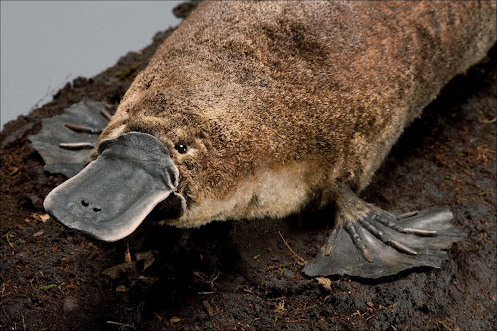Two Campers in Cloud Country
(Rock Lake, Canada)
In this country there is neither measure nor balance
To redress the dominance of rocks and woods,
The passage, say, of these man-shaming clouds.
No gesture of yours or mine could catch their attention,
No word make them carry water or fire the kindling
Like local trolls in the spell of a superior being.
Well, one wearies of the Public Gardens: one wants a vacation
Where trees and clouds and animals pay no notice;
Away from the labeled elms, the tame tea-roses.
It took three days driving north to find a cloud
The polite skies over Boston couldn't possibly accommodate.
Here on the last frontier of the big, brash spirit
The horizons are too far off to be chummy as uncles;
The colors assert themselves with a sort of vengeance.
Each day concludes in a huge splurge of vermilions
And night arrives in one gigantic step.
It is comfortable, for a change, to mean so little.
These rocks offer no purchase to herbage or people:
They are conceiving a dynasty of perfect cold.
In a month we'll wonder what plates and forks are for.
I lean to you, numb as a fossil. Tell me I'm here.
The Pilgrims and Indians might never have happened.
Planets pulse in the lake like bright amoebas;
The pines blot our voices up in their lightest sighs.
Around our tent the old simplicities sough
Sleepily as Lethe, trying to get in.
We'll wake blank-brained as water in the dawn.
In this country there is neither measure nor balance
To redress the dominance of rocks and woods,
The passage, say, of these man-shaming clouds.
No gesture of yours or mine could catch their attention,
No word make them carry water or fire the kindling
Like local trolls in the spell of a superior being.
Well, one wearies of the Public Gardens: one wants a vacation
Where trees and clouds and animals pay no notice;
Away from the labeled elms, the tame tea-roses.
It took three days driving north to find a cloud
The polite skies over Boston couldn't possibly accommodate.
Here on the last frontier of the big, brash spirit
The horizons are too far off to be chummy as uncles;
The colors assert themselves with a sort of vengeance.
Each day concludes in a huge splurge of vermilions
And night arrives in one gigantic step.
It is comfortable, for a change, to mean so little.
These rocks offer no purchase to herbage or people:
They are conceiving a dynasty of perfect cold.
In a month we'll wonder what plates and forks are for.
I lean to you, numb as a fossil. Tell me I'm here.
The Pilgrims and Indians might never have happened.
Planets pulse in the lake like bright amoebas;
The pines blot our voices up in their lightest sighs.
Around our tent the old simplicities sough
Sleepily as Lethe, trying to get in.
We'll wake blank-brained as water in the dawn.





.jpg)







